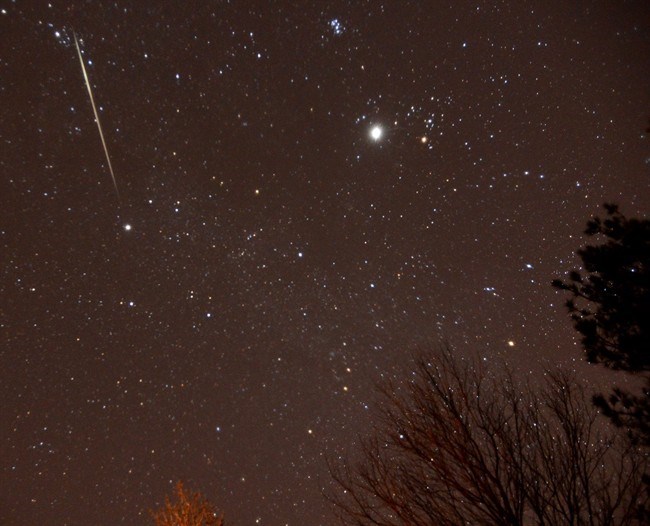Islanders with their eyes on the sky Friday night might catch a flurry of shooting stars.
The annual Geminid meteor shower will be best viewed after dark on Friday and into the early hours of Saturday.
The meteor shower happens every December when Earth passes through the debris of an old comet, said Dennis Crabtree, director emeritus of the Dominion Astrophysical Observatory in Saanich.
When the dust and pebbles of the comet enter the Earth’s atmosphere, they “get super heated and shine bright,” Crabtree said.
“Every once in a while, you’ll get a bigger piece that comes into the Earth’s atmosphere.”
The meteor shower gets its name from the fact that the shooting stars seem to be falling from the Gemini constellation.
The best time to look for meteors will be after midnight.
“Find someplace dark, and look up into the sky to the east. If you can find the constellation Gemini, that’s where they’ll appear to come from,” Crabtree said.
Gemini looks like two stick people joined at the hand. To find the constellation, look for its two brightest stars, Castor and Pollux, to the east of the three stars that make up Orion’s Belt.
Crabtree suggested heading to Cattle Point in Uplands Park to look for shooting stars.
The Geminid meteor shower is one of many throughout the year. Crabtree said the Perseid shower in August is best known, likely because the summer weather makes stargazing more appealing and clear nights more common.
Environment Canada is forecasting cloudy periods for Friday night.



